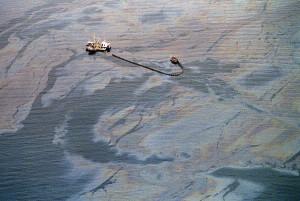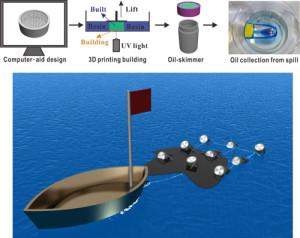While the world is slowly waking up to the fact that we need to move away from fossil fuels and find cleaner, renewable energy sources, we still use a lot of oil. In fact, every day the world consumes 85 million barrels of the stuff, and that number isn’t dropping. Even as oil consumption begins to decline in the world’s major industrialized nations, thanks in part to better fuel efficiency and the growing development of solar and wind power, it is on the rise throughout China and in still developing nations. There is more oil being transported throughout the world today than ever before, and most of it is moved by large tankers.
Unfortunately moving that much oil brings with it a whole host of risks and challenges, and has created its fair share of ecological disasters. When you think of oil disasters, most people will probably remember 1989’s Exxon Valdez, and many would assume that it was one of the worst in history. Sadly it’s not even close to being the worst in the US; that honor belongs to the BP Oil Disaster in the Gulf of Mexico that happened back in 2010, and leaked six times the oil into the oceans as the Exxon Valdez. In 2015 there were four major oil spills caused by ships hitting ground or colliding with another ship. In 2014 there were six, in 2013 there were eight, 2011 saw eleven and 2010 saw a whopping thirteen.

Solidified globs of oil seen in waves in the Gulf of Mexico from the BP Deepwater Horizon oil spill.
Once you dump hundreds of thousands of pounds of crude oil into seawater, it can’t just be left there, but cleaning it up is often as destructive as the original spill. None of the methods of cleaning up oil spills are actually very good at removing oil from water, but unfortunately they’re all that are available. Common solutions include controlled surface burns, which cause air pollution and further destroy marine life. Chemical dispersants and solidifiers have proven effective, but simply shift the damage from one location to the next by either expanding the areas affected by oil, or creating tons of solidified oil globs that need to be collected, cleaned up and then disposed of.
One of the oldest methods of cleaning oil is a process called skimming, which is also one of the more reliable methods. The problem is that calm waters are required, or any skimmed oil can simply be released back into the water after a few big waves hit. But a group of researchers in China have developed a 3D printable oil-skimmer that was designed to be inexpensive, versatile and resistant to rough waters. The simple skimming devices can be 3D printed in the field and customized based on need, the type of oil that needs to be skimmed, and the amount of oil that needs to be collected.
The 3D printable oil-skimmer has two primary components. A 3D printed mesh on top of the device is treated with low surface energy materials. The treated mesh material will repel the good, clean water from it, while attracting the oil and pollutants to it. The oil will be stored in the bottom half of the device, where it is kept safely in place and protected from being spilled back into the water. Even if the boat towing the oil-skimmers is tossed around in rough seas, the captured oil will stay put in the lower compartment.
Professor Zhou Feng from the Lanzhou Institute of Chemical Physics of the Chinese Academy of Sciences led the team that developed the oil-skimming devices. They were designed to allow cleanup crews to use non-chemical or environmentally damaging methods of collecting excess oil that were also inexpensive and easy to produce. The team published their full research and oil-skimmer design in Advanced Materials Interfaces as a paper titled 3D Printing as Feasible Platform for On-Site Building Oil-Skimmer for Oil Collection from Spills. Thoughts on this technology? Discuss in the 3D Printed Oil Skimmer forum over at 3DPB.com.
Subscribe to Our Email Newsletter
Stay up-to-date on all the latest news from the 3D printing industry and receive information and offers from third party vendors.
You May Also Like
Print to Wear: Steve Madden Goes 3D with Hilos
Footwear is evolving. That’s how Hilos’ CEO sees it, envisioning footwear as the next big industry set to scale through 3D printing. During this year’s TechCrunch Disrupt Startup Battlefield 200...
3D Printing News Briefs, October 5, 2024: JIMTOF, Sensors, Façades, & More
In 3D Printing News Briefs today, 3D Systems announced a major milestone in the commercialization of the Oqton Manufacturing OS, the 32nd Japan International Machine Tool Fair (JIMTOF) announced a...
Daring AM: The Future of Pathogen Detection is 3D Printed
Pathogen detection is essential in many industries, from healthcare to food safety. The faster harmful bacteria or other microorganisms can be detected, the better we can protect people from diseases...
A$AP Rocky Debuts New 3D Printed PUMA Shoes
Rapper and producer A$AP Rocky has collaborated with PUMA and Carbon to create a shoe. The Mostro 3D “Red” is available today at Dover Street Market, Nubian, and SNEAKERSNSTUFF, as...







































